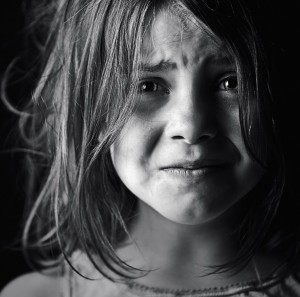Post-traumatic stress disorder / Injury (PTSD PTSI) identifies a specific emotional distress that can follow a major psychologically traumatic event. This uncommon event would typically produce fear and anxiety in anyone who experienced it.
We believe that the classification and the use of the term DISORDER is not applicable from as it implies that it is NOT an injury. (see IS IT PTSD or PTSI?)
I found over the years that every individual has a unique definition as to what it is, possibly how it is caused and an opinion as to who is immune from its affects. What complicates it more is that we as a Police or Military are likely to have multiple mechanics of injury. This often creates complex timing of symptoms that may begin immediately or not surface for six months, a year, or even longer.
I feel this by extension, puts the officer behind the curve in seeking and identifying its root cause, depending on his or her unique definition or belief as to what it is.
Post-traumatic stress disorder is an anxiety disorder that can occur after you have been through a traumatic event. A traumatic event is something horrible and scary that you see or that happens to you. During this type of event, you think that your life or others’ lives are in danger. You may feel afraid or feel that you have no control over what is happening.
Anyone who has gone through a life-threatening event can develop PTSD. Dont let anyone tell you different or let our Police or Military mentality bias mislead you into believing any of us are immune. Some may carry or manage the symptoms differently or appear that they are not affected, however in some way they will carry the impact of the event with them.
 Those that are able to manage the effects themselves and give the appearance of not being affected by PTSD may later find that they are like a glass of water. With other traumatic or stressful events adds water to a filling glass or with a sudden bump or tip the water spills over unexpectedly. This is not to say that if you are honestly not showing or felling the signs of PTSD that you will. However I suggest that everyone has a maximum level of tolerance or breaking point. If you feel you do not then you may be in the wrong line of work.
Those that are able to manage the effects themselves and give the appearance of not being affected by PTSD may later find that they are like a glass of water. With other traumatic or stressful events adds water to a filling glass or with a sudden bump or tip the water spills over unexpectedly. This is not to say that if you are honestly not showing or felling the signs of PTSD that you will. However I suggest that everyone has a maximum level of tolerance or breaking point. If you feel you do not then you may be in the wrong line of work.
These events can include:
§ Police combat or military exposure
§ Child sexual or physical abuse
§ Terrorist attacks
§ A physical or sexual attack or assault
§ Serious accidents, such as a car wreck.
§ Natural disasters, such as a fire, tornado, hurricane, flood, or earthquake.
After the event, you may feel scared, confused, or angry. If these feelings don’t go away or they get worse, you may have PTSD. These symptoms may disrupt your life, making it hard to continue with your daily activities.
How does PTSD develop?
All people with PTSD have lived through a traumatic event that caused them to fear for their lives, see horrible things, and feel helpless. Strong emotions caused by the event create changes in the brain that may result in PTSD.
Most people who go through a traumatic event have some symptoms at the beginning. Yet only some will develop PTSD. It isn’t clear why some people develop PTSD and others don’t. How likely you are to get PTSD depends on many things:
§ How intense the trauma was or how long it lasted
§ If you lost someone you were close to or were hurt
§ How close you were to the event
§ How strong your reaction was
§ How much you felt in control of events
§ How much help and support you got after the event
Many people who develop PTSD get better at some time. But about 1 out of 3 people with PTSD may continue to have some symptoms. Even if you continue to have symptoms, treatment can help you cope and with management, symptoms don’t have to interfere with your everyday activities, work, and relationships.
What are the symptoms of PTSD?
Symptoms of PTSD can be frustrating, painful and `terrifying. They may disrupt your life and make it hard to continue with your daily activities. It may be hard just to get through the day.
PTSD symptoms usually start soon after the traumatic event, but they may not happen until months or years later. They also may come and go over many years. If the symptoms last longer than 4 weeks, cause you great distress, or interfere with your work or home life, you probably have PTSD.
There are four types of PTSD symptoms:
1. Reliving the event (also called re-experiencing symptoms)
- Hearing a car backfire, which can bring back memories of gunfire and war for a combat Veteran or Police Officer.
- Seeing a car accident, which can remind a crash survivor of his or her own accident.
- Seeing a news report of a sexual assault, which may bring back memories of assault for a woman who was raped.
Bad memories of the traumatic event can come back at any time. You may feel the same fear and horror you did when the event took place. You may have nightmares. You even may feel like you’re going through the event again. This is called a flashback. Sometimes there is a trigger — a sound or sight that causes you to relive the event. Triggers might include:
2. Avoiding situations that remind you of the event:
- A person who was in an earthquake may avoid watching television shows or movies in which there are earthquakes.
- A person who was robbed at gunpoint while ordering at a hamburger drive-in may avoid fast-food restaurants.
- Some people may keep very busy or avoid seeking help. This keeps them from having to think or talk about the event.
You may try to avoid situations or people that trigger memories of the traumatic event. You may even avoid talking or thinking about the event. For example:
3. Feeling numb:
- You may not have positive or loving feelings toward other people and may stay away from relationships.
- You may not be interested in activities you used to enjoy.
- You may not be able to remember parts of the traumatic event or not be able to talk about them.
You may find it hard to express your feelings. This is another way to avoid memories.
4. Feeling keyed up (also called hyper-vigilance):
- Suddenly become angry or irritable
- Have a hard time sleeping.
- Have trouble concentrating.
- Fear for your safety and always feel on guard.
- Be very startled when something surprises you.
You may be jittery, or always alert and on the lookout for danger. This is known as hyperarousal. It can cause you to:
What are other common problems?
People with PTSD may also have other problems. These include:
§ Drinking or drug problems.
§ Feelings of hopelessness, shame, or despair.
§ Employment problems.
§ Relationships problems including divorce and violence.
§ Physical symptoms.
Can children have PTSD?
 Children can have PTSD too. They may have the symptoms described above or other symptoms depending on how old they are. As children get older, their symptoms are more like those of adults. Here are some examples of PTSD symptoms in children:
Children can have PTSD too. They may have the symptoms described above or other symptoms depending on how old they are. As children get older, their symptoms are more like those of adults. Here are some examples of PTSD symptoms in children:
-
Young children may become upset if their parents are not close by, have trouble sleeping, or suddenly have trouble with toilet training or going to the bathroom.
-
Children who are in the first few years of elementary school (ages 6 to 9) may act out the trauma through play, drawings, or stories. They may complain of physical problems or become more irritable or aggressive. They also may develop fears and anxiety that don’t seem to be caused by the traumatic event.
